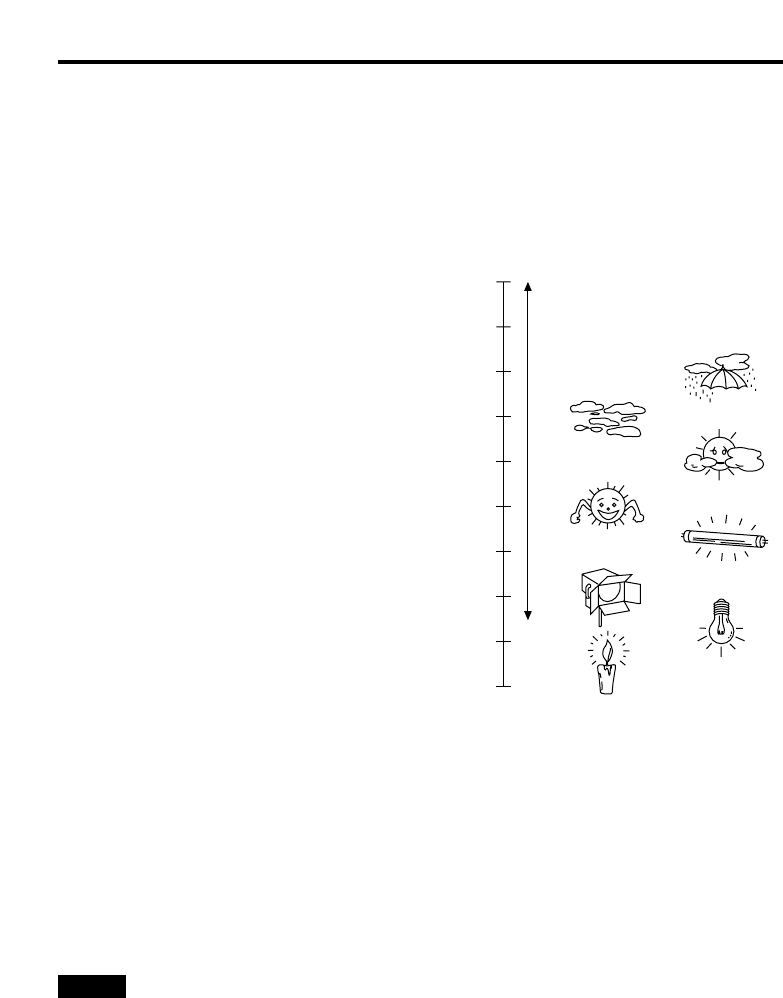
- 15 -
How to Adjust
_ White balance adjustment
Adjust the white balance after shooting a white object by at least 50% of the screen.
NOTE: If the white signal level is over 100% or less than 50%, the white balance may
not be normally adjusted.
Colour temperature outdoors may vary depending on weather conditions.
NOTE
_
Colour temperature and white balance adjustment (reference)
When carbon is burnt, it develops
various colours of light depending on the
temperature. Natural light can be
specified by colour temperature
reflecting to the colour developed when
carbon is burnt.
The light of 3,200K (K=Kelvin, –273°C
equals to absolute zero temperature 0K)
represents the same value (colour) as
what develops when carbon is burnt at
3,200K (2,927°C). The relationship
between the colour temperature of the
light source and weather condition is
indicated in the right figure. Let’s study
the difference of shooting an indoor
object from shooting one outdoors.
Studios are usually lit with incandescent
lamps and the colour temperature of a
white object in a studio is around
3,200K. The colour temperature of a
white object outdoors is around 6,500K.
The former may look a little yellowish
while the latter appears somewhat
bluish when they are shot by a camera.
However, the human eye does not recognize colour differences among these objects
even under different ambient lighting conditions, because of their adaptability to light.
The video camera reproduces colour differences with high fidelity and the colour of an
object somewhat different from what appears to the human eye.
Therefore, there is a need to adjust the white balance in order to correct differences
between colour temperatures.
10000K
Blue sky
Rainy
Partly cloudy
Cloudy
AWC
Fine
Fluorescent lamp
Halogen lamp
Tangsten lamp
Candle
9000K
8000K
7000K
6000K
5000K
4000K
3000K
2000K
1000K
Colour temperature values


















